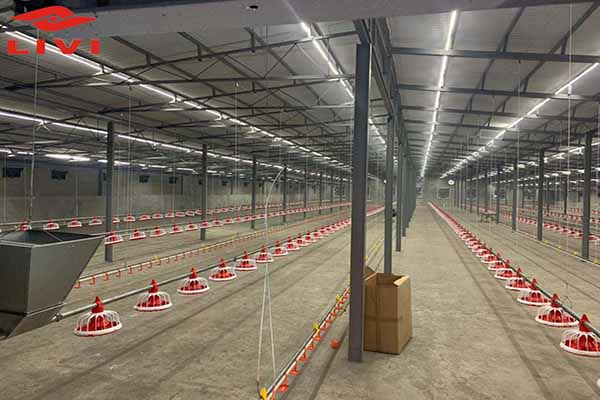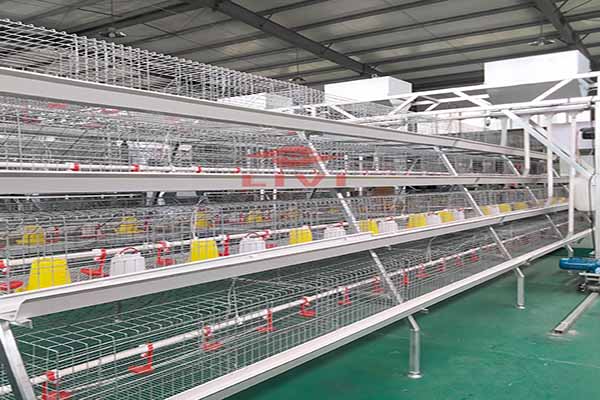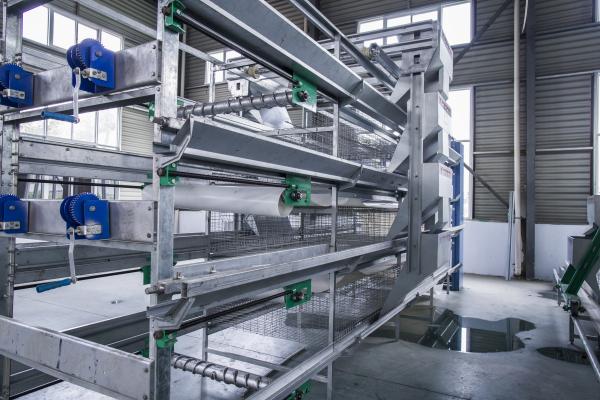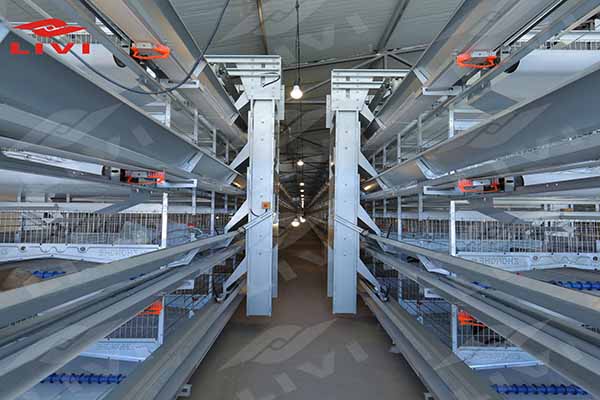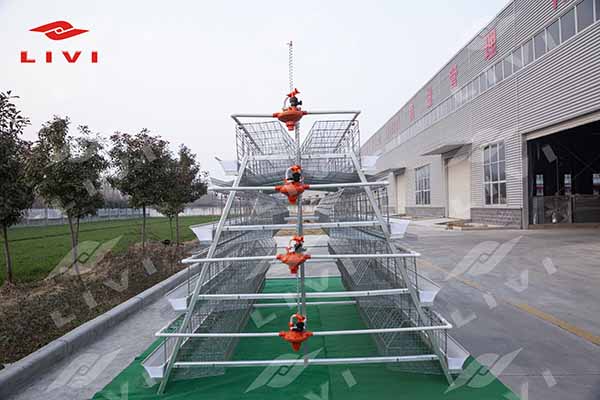Automatic Environmental Control Equipment
The environmental control system for chicken farming is mainly suitable for closed coop.
Material: Galvanized sheet, stainless steel, aluminum alloy
Features: Long service life, corrosion resistance
Configurations: negative pressure fan, water curtain, sidewind window, heating system, intelligent control system.
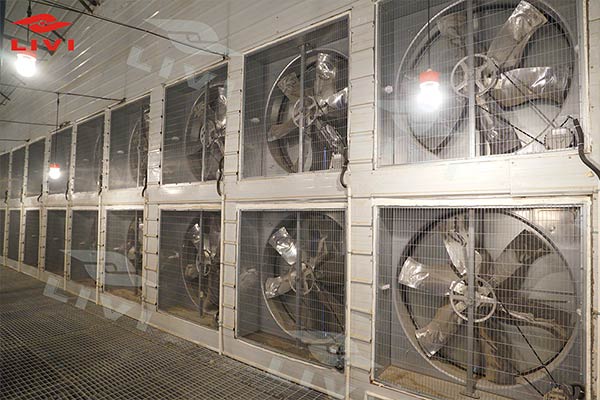
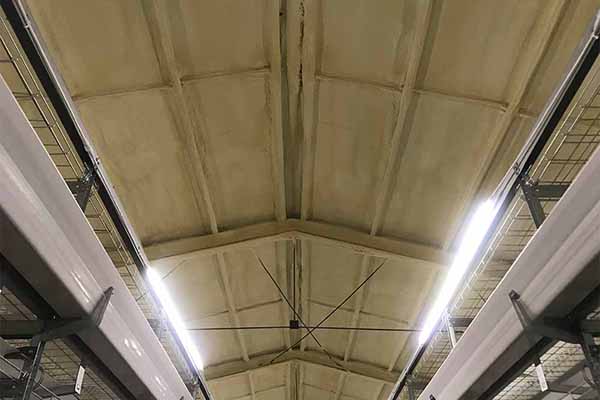
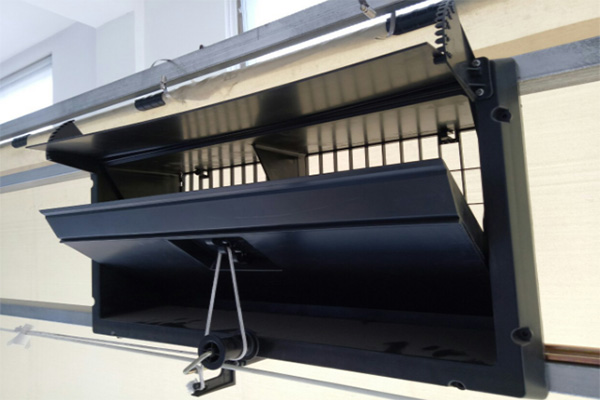


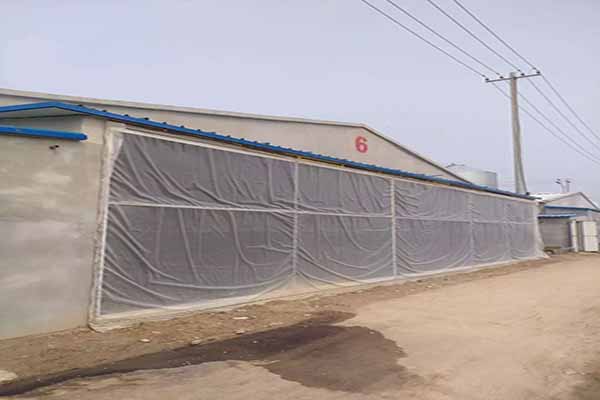
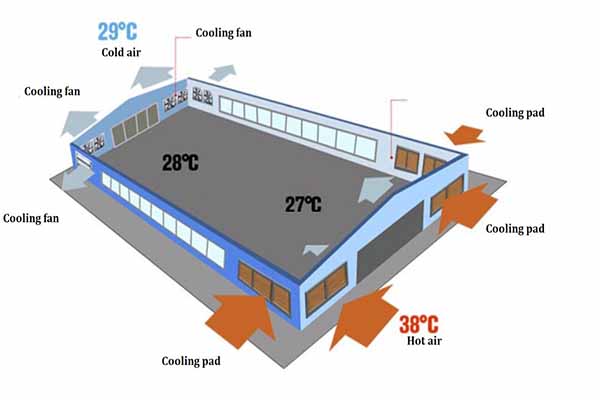
In modern poultry farming, creating and maintaining an optimal environment is essential for the health and productivity of the flock. The Automatic Environmental Control Equipment is a revolutionary solution designed to streamline and automate the management of the poultry house environment. This article provides a comprehensive overview of the product, details its components, and explores the pivotal role of environmental control equipment in poultry houses.
Product Introduction
The Automatic Environmental Control Equipment is a state-of-the-art system designed to regulate key environmental factors within the poultry house. This includes temperature, humidity, ventilation, lighting, and heating, ensuring a comfortable and conducive atmosphere for poultry farming.
Product Components
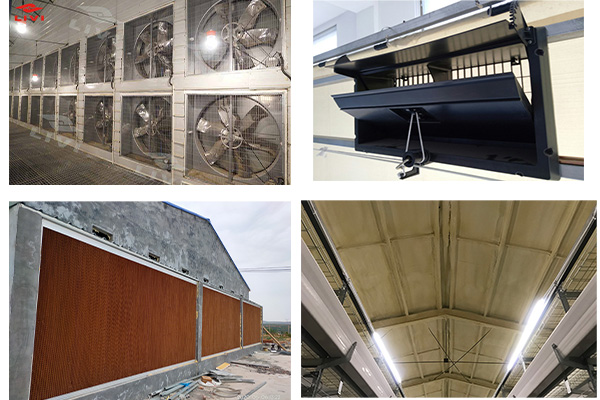
1. Ventilation Fans:
- Function: Vital for maintaining optimal airflow within the poultry house.
- Importance: Regulates temperature, prevents the buildup of harmful gases, and ensures fresh air circulation.
- Key Features: Variable speed control, energy efficiency, and durable construction for long-term use.
2. Louvered Side Wall (Small Windows):
- Function: Facilitates natural ventilation and light penetration.
- Importance: Regulates indoor temperature, enhances air exchange, and provides natural lighting.
- Key Features: Adjustable louvers for precise control, durable frame construction, and insect-proof design.
3. Evaporative Cooling Pads (Water Curtains):
- Function: Cools the air through water evaporation.
- Importance: Maintains an optimal temperature for poultry, especially in hot climates.
- Key Features: High water absorbency, corrosion-resistant frame, and uniform water distribution.
4. Lighting Systems:
- Function: Regulates the photoperiod for poultry, influencing their behavior and productivity.
- Importance: Ensures proper lighting conditions for feeding, egg production, and overall flock well-being.
- Key Features: Adjustable intensity, energy-efficient LED technology, and programmable lighting schedules.
5. Heating Equipment:
- Function: Maintains a comfortable temperature within the poultry house, especially during colder seasons.
- Importance: Prevents stress in poultry, ensuring optimal growth and egg production.
- Key Features: Thermostatic controls, even heat distribution, and energy efficiency.
Role of Environmental Control Equipment in Poultry Houses
Temperature Regulation:
- Ensures the poultry house maintains an ideal temperature, promoting bird comfort and health.
Humidity Control:
- Manages humidity levels to prevent issues such as respiratory distress in birds.
Ventilation:
- Facilitates proper air exchange, preventing the buildup of harmful gases and ensuring a fresh environment.
Lighting Management:
- Regulates the photoperiod to optimize bird growth, behavior, and egg-laying.
Heating in Cold Conditions:
- Provides warmth during colder seasons to prevent stress and maintain bird well-being.
Operating Mechanism
The Automatic Environmental Control Equipment operates based on real-time data from sensors and controllers. These components continuously monitor environmental conditions and adjust the equipment settings accordingly. This ensures a dynamic and responsive system that adapts to the specific needs of the poultry house.
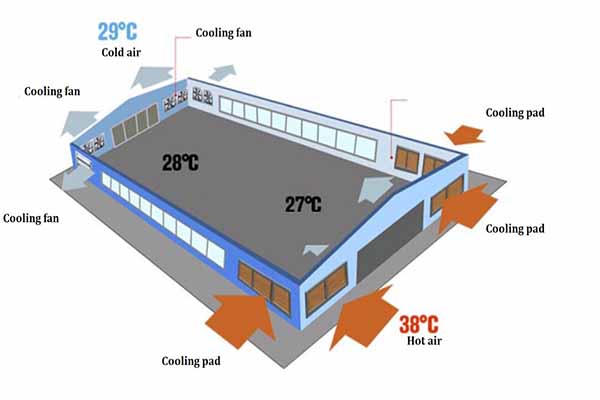
Benefits of Automated Environmental Control
Precision:
- Ensures precise control of environmental factors, minimizing stress and promoting bird welfare.
Efficiency:
- Automates processes, reducing the need for manual intervention and optimizing resource utilization.
Consistency:
- Maintains a consistent and optimal environment, contributing to consistent bird performance.
Conclusion
In conclusion, the Automatic Environmental Control Equipment stands as a game-changer in modern poultry farming. By automating the management of key environmental factors, this system not only enhances the well-being of the flock but also contributes to the overall efficiency and success of poultry operations. As the poultry industry continues to advance, the adoption of such innovative environmental control solutions becomes integral in achieving sustainable and productive poultry farming practices.







